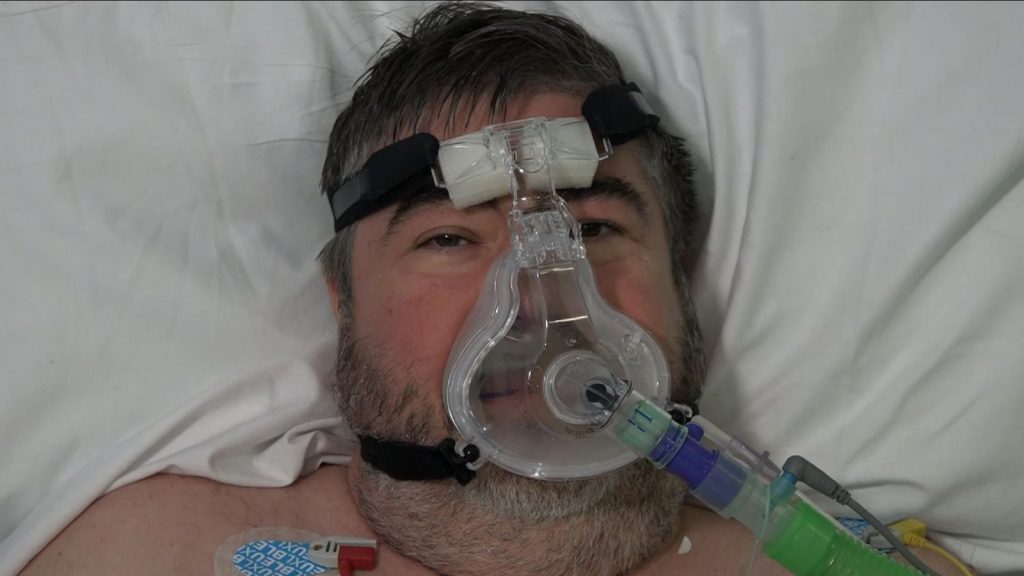The first thing that strikes me is the ages of the patients filling the critical care beds.
The faces of COVID-19 victims seared into our collective consciousness are mostly elderly. Not exclusively but overwhelmingly. But as I walk through Warrington Hospital’s intensive care unit I see that many of these patients are not old.
There’s a young Asian man who is struggling to breathe. He looks like he is in some discomfort. His chest heaves up and down in an exaggerated way. His face is contorted like he is in some pain. I’m told he is just 28-years-old and that he is too ill to talk to me.
In the bed opposite there is a woman who looks like she is between 30 and 40-years-old. She is sitting upright and breathing unaided. We wave at each other.
She smiles and so do I but she can’t see my face because of all the PPE I am wearing, including a mask and full screen visor. The nurse who is supervising my visit tells me this woman is a cancer patient and has COVID-19 – two life-threatening diseases at the same time
The first person I speak to is Mark Anderson Hammersley. He tells me he’s 57 and a father of two young children. Mark is breathing with the aid of a CPAP machine. His voice is raspy, a little breathless, and barely audible over the constant bleeping of all the ward’s life saving diagnostic machines.
“I’ve got diabetes and I’m overweight so they’re my risk factors. So to be honest for me it’s still early days,” he says. His underlying health issues meant Mark had to shield for most of the year. It worked and he avoided falling ill.
But a house move, Mark thinks, exposed him to the potentially deadly virus. Not just Mark but his wife too. He tells me he’s really worried about her even though she is still at home. I ask Mark if he’s concerned about his own health, about the possible outcome.
“I’m worried yes,” he replies. “But I’m feeling safe if that makes sense.”
Mark is right to feel more confident. There are more treatments available, medicines that can swing the outcome in the patient’s favour. We know more about the virus and how it behaves.
In the bed next to Mark’s is grandmother Susan Bostock. And like Mark, Susan is also breathing using her CPAP machine. Without it, Susan tells me, she would be dead.
“I’ve done everything that I’ve been told. Social distancing and the rest of it, but I don’t think people should take it lightly,” Susan says. She taps her fingers on the mouthpiece she is wearing.
“I know how far I can breathe at the minute. And I know I can’t survive without this.
Like Mark, Susan has full confidence in the medical team who are looking after her. She says she feels “reassured” and is “getting the best care and medication”.
The relentless rise of infections in the North West has led to a surge in hospital admissions. Warrington Hospital’s intensive care unit is almost full. There are only two empty beds left. Soon extra capacity will be needed.
Warrington is continuing elective treatments at its COVID-safe site. But if infections and admissions keep rising the way they are now, our health service will again have to make very difficult choices.
Dr Alex Crowe, medical director at Warrington and Halton Hospitals NHS Foundation Trust, is full of praise for his team. He describes his doctors and nurses as “tenacious” and “resilient”, two characteristics they will have to possess in abundance if they are to make it through the looming crisis.
There were no COVID-19 deaths recorded at this hospital between July and August this year. But in the past week alone there have have been eight.
Dr Crowe says it feels like “we very much are back to where we were earlier this year”.
“I think we are much more prepared than we were so we understand the needs and the interventions that are required for patients that present with COVID,” he says.
“I think that the challenges lie with our operational demands as we move forward in the next days and weeks.”

